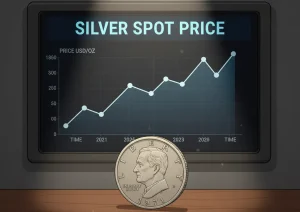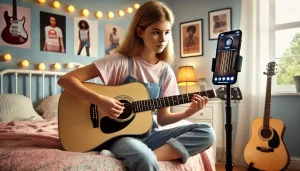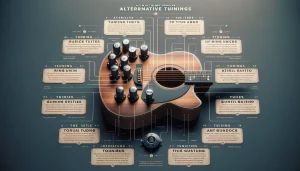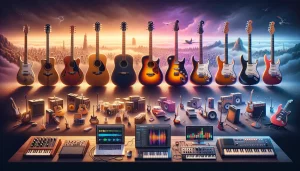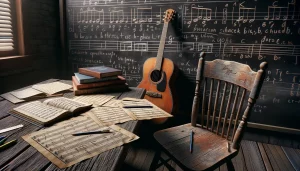Evolution of Guitar Technology
From Gut Strings to Digital Strings
The journey of the guitar is nothing short of legendary. Think about it—centuries ago, guitars were strung with actual guts (yes, animal intestines!), and now we’re in an era where a guitar can mimic an entire orchestra with just a flick of a switch. Call it progress or magic—it’s both.
In the 20th century, guitars hit their first technological revolution: the birth of the electric guitar. Suddenly, those gentle acoustic whispers roared into amplifiers, defining rock ‘n’ roll forever. Brands like Fender and Gibson became household names as they shaped endless sounds that still resonate today. Then came effects pedals—distortion, reverb, delay—a Pandora’s box of sonic possibilities.
Fast forward to today, and things have gone digital. Modern guitars can do things that were unimaginable to your favorite classic rockers. Why settle for one sound when multi-effects processors let you summon an entire gallery of tones? And let’s not forget innovations like digital modeling amps or guitars embedded with MIDI technology.
- A single guitar can now replicate vintage acoustics, roaring electrics, or even synth sounds.
- Gigging musicians carry minimal gear thanks to software solutions that replace bulky rigs.
Technology hasn’t just upgraded the guitar; it’s rewritten the rulebook. The instrument’s history is still being composed, note by futuristic note.
Impact of Digital Tools on Guitar Playing and Learning
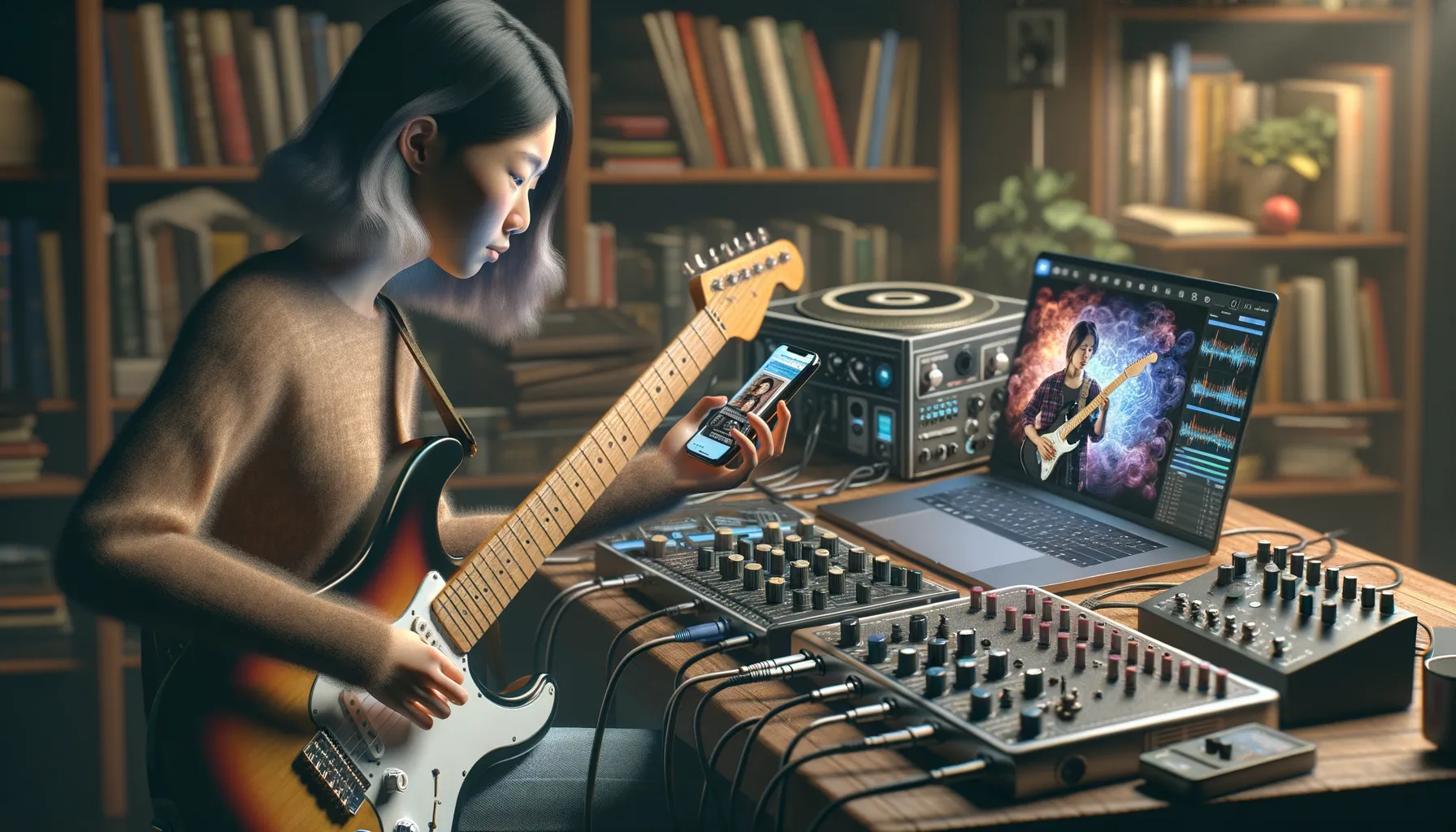
Revolutionizing Practice Routines
Picture this: you’re sitting in your room, guitar in hand, and instead of flipping through old chord charts or rewinding YouTube clips endlessly, you’re guided step-by-step by an app that feels like a personal coach. That’s the magic of digital tools today. Apps like Fender Play or Yousician adapt to your skill level right out of the gate. Miss a chord? No sweat. They’ll loop back, gently nudging you until your fingers get it just right.
And let’s not forget the metronome—a once clunky, ticking box is now a sleek app on your phone, complete with customizable tempos and drum beats to keep your rhythm razor-sharp. Struggling with improvisation? Tools like JamTrack Central offer backing tracks in every genre imaginable to fuel creativity.
- Real-time chord recognition apps, like Chordify, can help you play along with your favorite tracks seamlessly.
- Digital tuners mean no more awkwardly fiddling with knobs—just pluck, tune, and go.
Expanding Musical Horizons
What’s truly remarkable is how these tools are breaking down barriers for everyone, from hobbyists to seasoned shredders. For instance, platforms like TrueFire offer lessons from top-tier guitarists globally, making it feel like a private masterclass… without the airfare. Ever dreamt of playing flamenco or jazz fusion? Now, the world of niche genres is just a download away.
Even songwriting has entered a new era. Software such as Guitar Pro lets you compose entire tracks, visualize intricate tab arrangements, and hear playback instantly. It’s like having an orchestra of guitars at your fingertips. Whether you’re strumming around a campfire or chasing arena-worthy solos, digital tools are transforming how we connect with music—and with ourselves.
Integration of AI in Guitar Music Creation
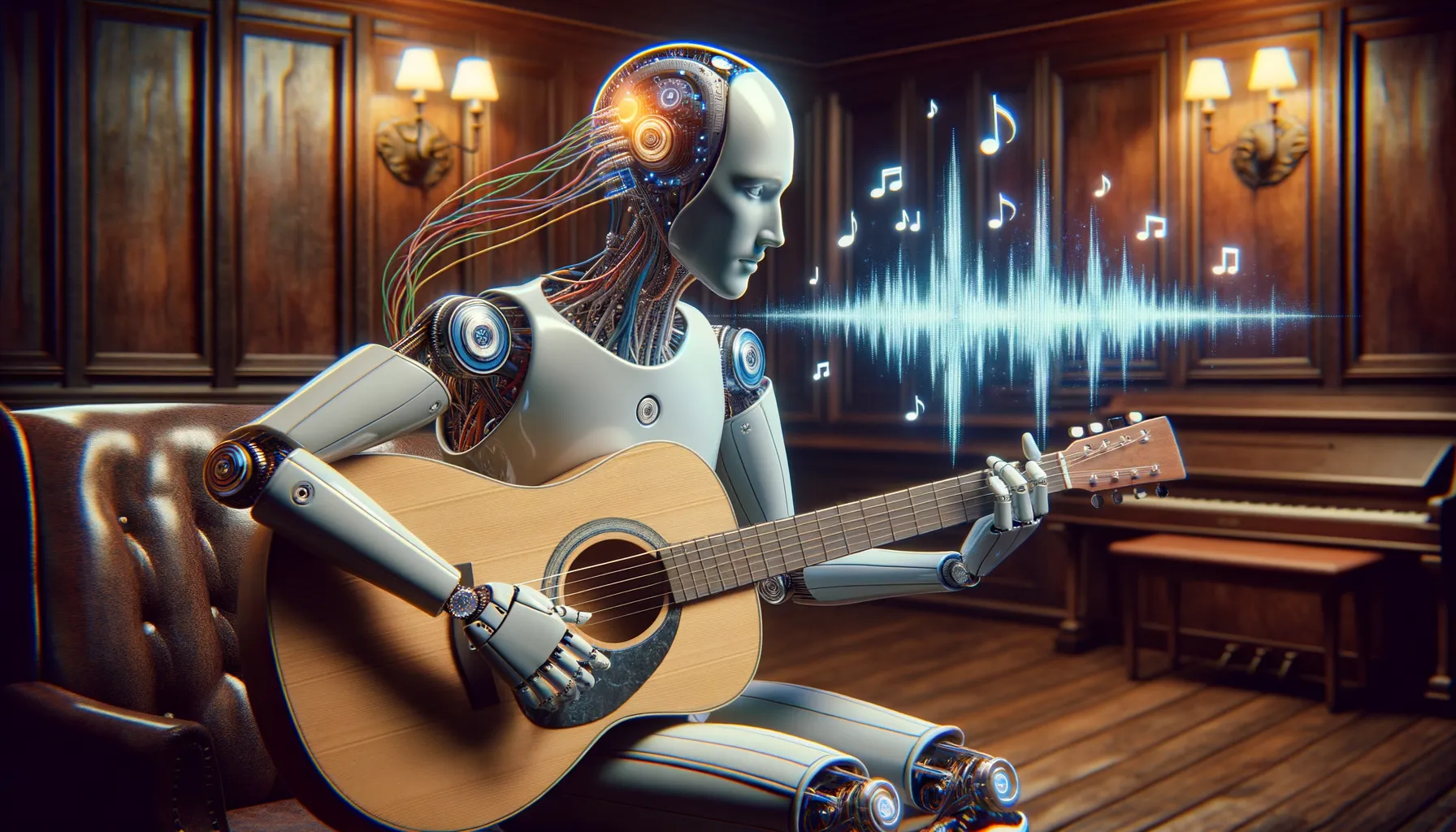
Revolutionizing Songwriting: How AI Becomes Your Bandmate
Imagine having a songwriting partner who never gets tired, always comes up with fresh riffs, and dives headfirst into experimentation without an ounce of fear. That’s what integrating AI technology into your guitar music creation feels like. It’s not about replacing your creativity; it’s about expanding it in ways you’ve only dreamed of.
For instance, now you can hum a melody or play a simple chord progression, and AI tools like Aiva or Amper Music can instantly layer harmonies, suggest variations, or even create entire backing tracks tailored to your vibe. Feeling adventurous? Let AI generate an unconventional scale for your next solo that defies the traditional norms of jazz or rock. It’s like scattering stardust over a familiar canvas—suddenly, the ordinary transforms into something cosmic.
- Create unique tone presets inspired by legendary guitarists or entirely fictional ones.
- Simulate vintage amp sounds without ever touching a real cabinet.
- Get real-time feedback on your phrasing, rhythm, or technique as you play.
Personalizing Your Tone With AI-Powered Tools
Ever wished you could bottle up the haunting echo of a deserted canyon or the thunderous rumble of a storm and inject it straight into your sound? With AI in your arsenal, such dreams are no longer far-fetched. Tools like GuitarML allow you to shape tones in microscopic detail, reacting dynamically to your playing style. Imagine bending a note and hearing the software adjust its reverb tail as if it were alive, breathing.
Some artists go even further, feeding AI algorithms their entire catalog to discover “hidden” patterns in their own music. The result? A kind of mirror reflecting creative sparks you didn’t even realize existed. It’s thrilling, a little eerie, but endlessly inspiring—a reminder that AI isn’t just tech. It’s a muse dressed in binary code.
Virtual and Augmented Reality for Guitarists
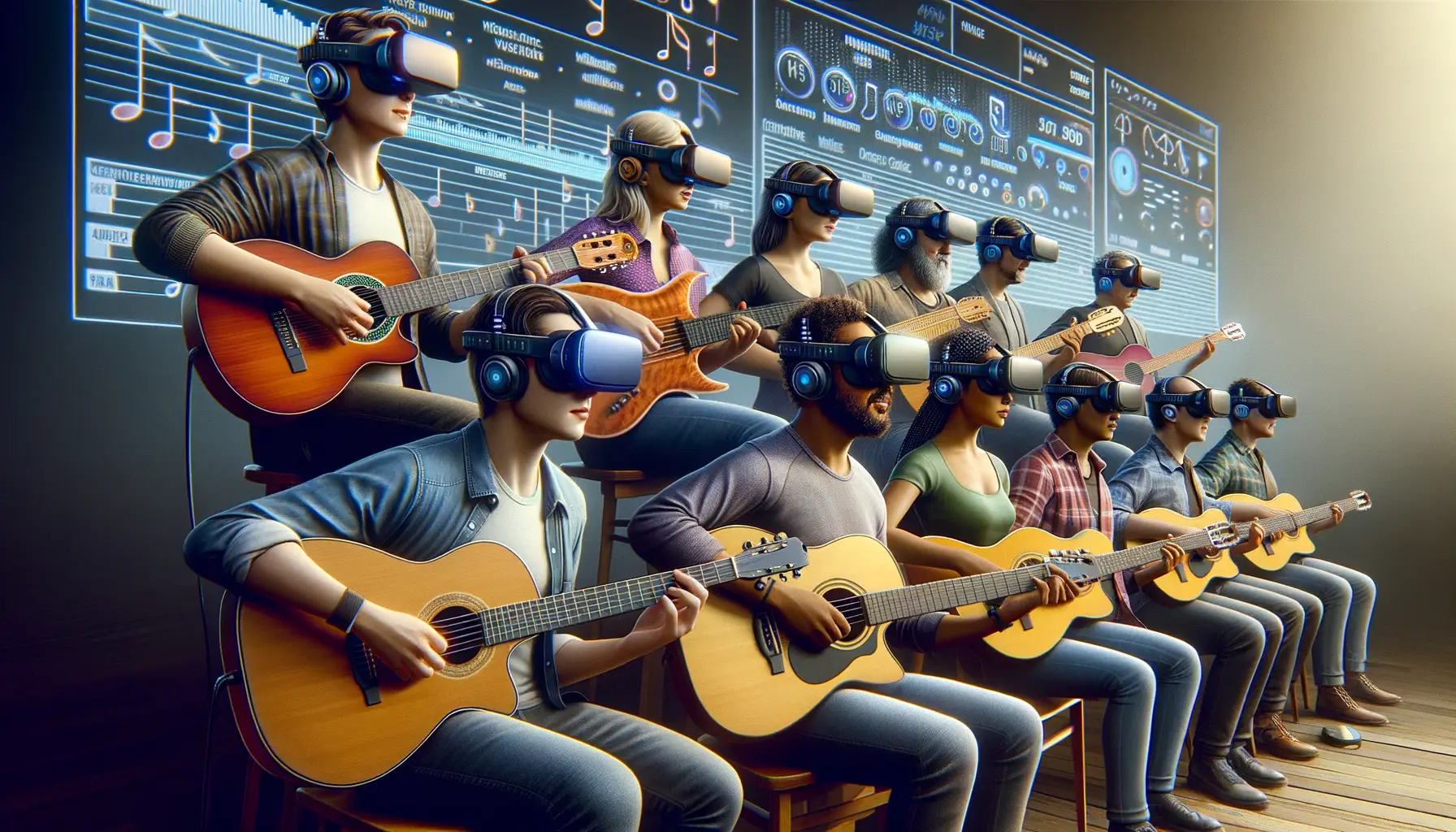
Step Into a New Dimension of Guitar Playing
Imagine strapping on your guitar, slipping on a VR headset, and suddenly you’re standing onstage at a packed arena. The roar of the crowd is deafening, your fingers move confidently across the fretboard, and every note you play seems to light up the virtual atmosphere. Sounds like a dream? With virtual reality (VR) and augmented reality (AR), this could be your daily practice session.
These technologies are revolutionizing the way we approach the guitar, merging the physical with the digital in fascinating ways. Think about AR apps that can overlay chord diagrams directly onto your fretboard or VR experiences where you jam alongside holograms of iconic players like Jimi Hendrix or John Mayer. It’s not just practice anymore—it’s an adventure.
- Create your dream rig in virtual environments without ever buying gear.
- Play immersive rhythm games that sharpen your timing while keeping it addictive and fun.
- Explore interactive, 360° lessons guided by world-class tutors in stunning visual settings.
The fusion of music and tech offers endless creativity—and for guitarists, this is nothing short of magical. With VR and AR as your tools, ordinary practice transforms into epic quests and groundbreaking performances.
Sustainability and the Future of Guitar Manufacturing
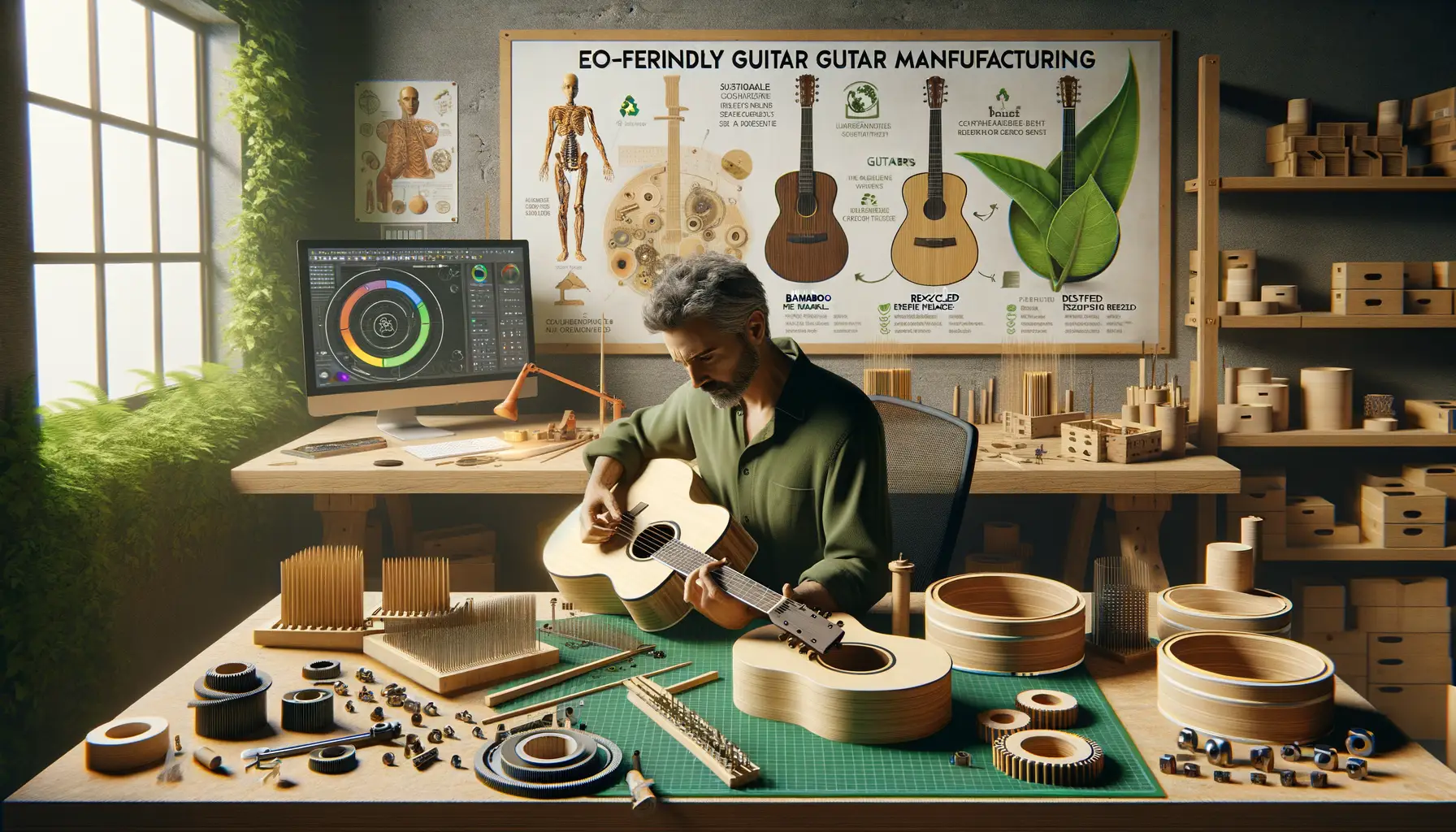
The Green Revolution in Guitar Craft
Close your eyes and think about it—your beloved guitar might carry stories beyond its melodies. But what about the story of the wood it’s made from? Today, the guitar industry faces a critical challenge: how do we balance tradition with environmental responsibility?
Sustainability isn’t just a buzzword; it’s the future of music making. Many guitar manufacturers are now stepping up to protect endangered woods like rosewood and mahogany, turning instead to ethically sourced alternatives or even lab-grown materials that mimic the tonal beauty of the classics. Imagine holding a guitar made from recycled materials that still sings like a masterpiece—amazing, right?
- Fender has introduced initiatives to reduce waste by using smaller offcuts of timber.
- Taylor Guitars, on the other hand, leads the charge with their Ebony Project—replanting trees to ensure future generations can strum out their dreams.
Eco-forward Choices for Modern Players
Have you considered the environmental footprint of your instrument? Beyond wood sourcing, brands are innovating with biodegradable packaging, water-based finishes, and even solar-powered factories. It’s a win-win: preserving the planet without sacrificing performance.
Next time you cradle your guitar, remember—your power as a musician doesn’t stop at soundwaves. By supporting sustainable guitar makers, you’re striking the right chord for a better tomorrow.

